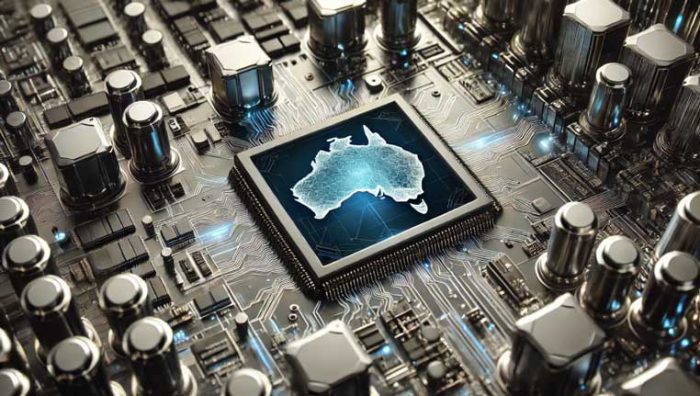What is a data centre: How does it work? What’s inside?

A data centre has long been vital to the success of Australia’s organisations. Times may have changed from clunky mainframes and on-premises servers to cloud-based infrastructures and virtual networks, but the data centre still stands as the beating heart of a business’s day-to-day operations.
And the best part? The data centre of today is more powerful than ever. From the emergence of cloud technology to integrating artificial intelligence and machine learning, the modern data centre empowers Australia’s businesses with unprecedented reliability, efficiency and scalability.
Macquarie Data Centres has been at the forefront of data centre technology for over two decades. We’ve witnessed the transition from simple on-premises mainframes to multi-layered virtual infrastructures firsthand. We have helped hundreds of organisations, from the world’s biggest hyperscalers to the Australian Federal Government, transition to modern data centres in line with the world’s growing need for on-demand services.
As experts in the field, we’re going to walk you through everything you need to know about data centres, including how they work, how they can benefit your business, and how emerging technologies have changed the data centre for the better.
But let’s start with the basics. What is a data centre, and why are they so vital for businesses?
What is a data centre?
The data centre is the central, physical hub of an organisation’s digital operations. Think of it as a secure, stable home that provides the power and cooling needed to run the network of computer systems that house a business’s vital data. Almost all modern companies rely on data centres to run shared applications, store confidential information and deliver a high standard of service to their customers.
Why are data centres important?
Data centres are more than digital storage devices. They handle almost every aspect of a company’s day-to-day operations. For example, an organisation might use a data centre to host:
- Shared email servers.
- Productivity applications.
- E-commerce platforms.
- Collaboration services.
- Remote working software.
- Financial transactions.
- Customer relationship management (CRM) solutions.
- Video streams.
- Supply chains.
- IoT data processing.
- Research and development (R&D).
- Cloud applications.
- AI and machine learning.
On top of the servers and racks they power, data centres also act as storage vaults for an organisation’s confidential information. When structured correctly, they are incredibly safe, boasting several layers of physical and cyber security to aid with intrusion prevention. They also offer numerous features that assist with disaster recovery and leverage redundancy to ensure an organisation can remain online if a power outage occurs.
What are the core components of a data centre?
Data centre architecture is highly complex, with dozens of elements working in tandem. We can broadly divide a data centre’s physical infrastructure into four broad categories:
- Computing and processing infrastructure.
- Storage and data management.
- Network Infrastructure.
- Support infrastructure.
Computing and processing infrastructure.
Data centres’ primary function is to power and cool high-performance servers. These servers are primarily responsible for processing data. Servers can manage complex databases, handle user requests, execute applications, and solve machine-learning problems.
Servers may be centralised on a business’s premises or accessed remotely. They also come in several different form factors. Let’s explore a few common variations in more detail.
- Rack servers are the most common server form factors found in data centres. They come in various shapes and sizes and can be stacked on top of one another to maximise space. Each rack server has its own power supply alongside network switches, ports and cooling fans.
- Mainframe servers are robust, high-performance computers ideal for intensive tasks and real-time processes. Their multitasking capability makes them an enduring choice for reliability and security. That said, the evolution of the cloud means on-premises mainframes aren’t as standard as they once were.
- Blade servers are even more compact than rack servers. Each independent blade fits into a shared chassis that accommodates multiple servers. While blade servers are easily scalable and hassle-free to manage, it’s important to note that their processing power is comparatively limited compared to rack or mainframe servers.
The right choice of server will depend entirely on the task at hand. For instance, relying on a general-purpose CPU may yield unreliable results when dealing with high-tech simulations. Similarly, a centralised mainframe may cause latency issues for processes requiring real-time responses. In this case, a modular blade server positioned closer to the end-user would be a better solution.
Storage and data management.
Think of a data centre’s storage infrastructure as a warehouse where all critical information is stored, managed and accessed. Modern data storage systems are fast, efficient and powerful, holding a vast amount of information that can be accessed quickly and recovered instantly if any data is lost or compromised.
Network Infrastructure.
Data centre networking equipment is comprehensive and highly reliable. Switches, routers, and cables connect each of the servers together and provide communication with end-user locations. When everything is set up correctly, these networks can transmit high volumes of traffic with little to no latency or drop in performance.
Support infrastructure.
The data centre also contains several support systems to ensure everything works as intended. Uninterruptible Power Suppliers (UPSes) and backup generators act as emergency power sources to prevent downtime during outages. Ventilation, air conditioning, and liquid cooling systems ensure the servers and equipment remain at the optimum temperature.
How do we define the modern data centre?
When picturing a traditional data centre, you may imagine rows and rows of computers locked away in a single secure room within a business’s on-site premises.
However, this is becoming increasingly rare with the evolution of cloud computing and other emerging technologies. Instead, many businesses now prefer to utilise multiple interconnected physical and virtual data centres over a single on-premises location.
The cloud: How has it affected data centres?
The arrival of the cloud has significantly impacted how we think about the data centre. The days of a single localised on-site server running a business’s entire operation are long behind us. Instead, many companies now prefer to spread their operation over multiple data centres, public clouds, private clouds, and edge computing models.
The cloud allows organisations to run applications, process information and access data via the Internet. Rather than being maintained on-premises, these data centres are provided remotely by cloud data providers.
Some businesses prefer to keep all their data in a multi-cloud environment (several different cloud data centres), eliminating the need for on-site physical facilities altogether. Others adopt a hybrid-cloud approach, relying partially on cloud resources while retaining some on-premises data centres.
The hybrid data centre offers the best of both worlds, allowing businesses to use cloud computing for processes that require on-demand access and on-site data centres to maintain complete control over essential hardware and confidential information.
Does the cloud spell the end of the data centre?
Some people believe that the cloud’s evolution marks the end of the data centre, but this isn’t the case. In fact, all cloud processes and applications are themselves powered by remote data centres. Think of it as a synergistic relationship. As data centre technology improves, the cloud’s capabilities grow. As the cloud grows, data centres evolve, becoming more efficient and reliable for organisations. It’s the perfect cycle.
Edge computing: How has it affected data centres?
Edge computing is a paradigm that strives to position data centres closer to the end-user. In other words, it transitions computing resources from centralised data centres to the ‘edge’ of the network.
To put this into perspective, imagine the digital world as an interconnected web of data. Traditionally, the data centre would be positioned directly in the middle of the web, and all requests would travel through the network to reach it. This is fine for simple requests, but suppose a consumer or device needs a real-time response. In this case, even the slightest delay caused as the data traverses through the network can be detrimental to the user experience.
Edge computing models solve this problem by positioning computing processes and servers closer to the edge of the ‘web.’ Now, when a user or device sends a request, it needs to travel a much shorter distance. This reduces latency and allows requests to be processed immediately.
So, why is this important? As the Internet of Things (IoT) evolves, the need for on-demand services is growing. Everything from streaming services and video chats to autonomous cars and remote patient monitoring requires some form of real-time response rate. Edge computing provides the technology to ensure vital tasks are executed swiftly and efficiently. This minimises delays and streamlines the user experience.
How do data centres keep businesses running smoothly?
These days, data centre equipment has a lot of fail safes and optimisations to ensure businesses can operate at maximum efficiency all year round.
Redundancy and disaster control.
Modern data centre design utilises redundant (duplicate backup) systems that can seamlessly take control if one system stops working. This aids with disaster recovery and ensures business continuity during outages. All modern data centres also feature uninterrupted power supplies (UPSes) and store comprehensive backups of sensitive information, meaning an organisation can restore everything to normal in the worst-case scenario.
Virtualisation.
Data centres also offer several features that aid with efficiency. Virtualisation, for instance, allows a single server to split into several different servers, each of which can run its own processes. This optimises a business’s workflow and improves operational efficiency by allowing a business to run more tasks with less hardware. It also means they can prioritise essential processes and allocate fewer resources to low-priority tasks.
Security.
Modern data centres adopt a multi-layered approach to safety, employing a combination of physical security measures and digital safeguards. Security access control and biometric authentication systems ensure physical data centres are well-protected. Firewalls, encryption, multi-factor authentication and intrusion detection systems (IDS) fortify the digital side of things, safeguarding against unauthorised access, data breaches and cyber threats.
How does the modern data centre benefit businesses?
The modern data centre offers a myriad of benefits for businesses. Nowadays, companies aren’t limited by the size of their building when trying to scale their operation. Virtualised infrastructures are making it easier than ever for organisations to grow, become more efficient, and optimise their workflows. Let’s explore a selection of the key ways data centres benefit businesses.
- Faster services: Cloud data centres and edge computing models allow organisations to provide better on-demand services by keeping frequently accessed data closer to the end user.
- Scalability: Working with remote service providers makes it easier to scale up whenever required, as an organisation won’t be limited by on-site space.
- Remote working capabilities: Businesses can access cloud infrastructure from anywhere with internet availability. This makes it ideal for remote work arrangements.
- Cost efficiency: On-site data centre facilities have significant upfront and maintenance costs. Remote providers offer pay-as-you-go models, meaning businesses only pay for the resources they consume.
- Network security: Reputable providers invest heavily in security systems. Advanced encryption, data centre firewalls, regular audits and on-site experts ensure a business’s data remains safe and secure.
- Support: Physical support from skilled technicians and facility managers gives an organisation peace of mind that their data is in safe hands.
- Resource optimisation: Data centre providers offer a number of advanced resource optimisation features. This improves operational efficiency and reduces the power required to run critical processes.
- Cloud-native computing: Using the cloud allows businesses to leverage the full capabilities of cloud-native applications.
- Sustainability: Traditional on-premises locations often lag behind modern cloud infrastructures when it comes to efficiency. Remote providers prioritise the construction of green data centres. These advanced facilities are designed to ensure optimal energy efficiency in line with environmentally conscious practices.
Exploring the different types of data centre.
Advances in technology mean we now have access to more data centre models than ever before. Services can be classified based on who provides them, the technology they leverage, and how efficient they are. Let’s dive in and explore six common variations.
On-premise data centre.
This is the one you envision when you picture the traditional data centre. On-premise data centres are privately owned, designed, operated, and maintained by a single company. Many on-premise data centres are located on an organisation’s premises.
Colocation data centres.
A colocation facility is a shared space where multiple companies can house their servers off-premises. A business rents the infrastructure from a provider, like Macquarie Data Centres. In turn, they receive access to a building, on-site 24×7 security, multiple power redundancies and advanced cooling systems. While the company will still need to provide its own servers, colocation data centres offer a cost-effective way for businesses to scale their operation.
Hyperscale and cloud data centres.
Simply put, these hyperscale data centres cater for large-scale cloud service providers such as Macquarie Cloud Services, Microsoft Azure, Oracle Cloud, Google Cloud and Amazon Web Services (AWS), who require scalable and secure data centre facilities to house these cloud environments.
Managed services data centres.
Operated by Managed Service Providers (MSPs), these third-party data centres provide end-to-end services on behalf of a company. Businesses can lease all necessary hardware, software and security, meaning they don’t need to pay any upfront costs to purchase equipment outright.
Edge data centres.
Edge data centres are facilities strategically positioned closer to the end user. They reduce latency by processing data close to its origin, making them excellent for tasks that require rapid response times.
Modular data centres.
The modular data centre is a portable, self-contained facility that a business can place anywhere that data capacity is required. This allows organisations to bring processing capabilities closer to the source of data generation.
How are data centres assessed for reliability?
Data centres are heavily regulated and routinely assessed for reliability, redundancy capabilities, and efficiency.
The ANSI/TIA-942 standard for data centres is the most common method for assessing infrastructure. The Uptime Institute uses this standard to categorise data centres into four tiers, with ‘I’ being the lowest tier and ‘IV’ being the highest.
- Tier I denotes the most basic type of data centre. These models lack protection from unexpected failures, have little to no redundancy and feature single-capacity components. That said, even tier I data centres must have an uptime of at least 99.671% (28.8 hours of downtime per year).
- Tier II data centres are better at handling unexpected events, have a single, non-redundant distribution path, and offer redundant-capacity components. These data centres must have an uptime of 99.741% (22 hours of downtime per year).
- Tier III data centres are exceptionally high quality. They must have several redundant paths for power and cooling. Shutdowns should have no impact on IT. Tier III data centres must also have an uptime of at least 99.982% (1.6 hours of downtime per year).
- Tier IV data centres are designed to be entirely fault-tolerant. Every single component must have redundancy so that power outages and hardware failures do not impact service. Tier IV data centres must also have an uptime of 99.995% (26 minutes of downtime per year).
Introducing Macquarie Data Centres.
If you’re searching for the best data centre service for your organisation, choose Macquarie Data Centres. As Australia’s most trusted and recommended sovereign data centre provider, we have the expertise to design and deliver a high-performance solution tailored to your unique requirements.
Want to learn more about what we do? Read more about us here. Alternatively, book a tour today at one of our industry-leading data centres in Sydney and Canberra.
- Sydney CBD Campus – IC1 Macquarie Park Data Centre Campus – IC2
- Macquarie Park Data Centre Campus Intellicentre – IC3
- Canberra Data Centre Campus Intellicentre 4 Bunker – IC4
- Canberra Data Centre Campus Intellicentre 5 Bunker – IC5
There’s a reason the world’s biggest hyperscalers, enterprises, and the Australian Federal Government trusts Macquarie Data Centres. We’re committed to compliance, serious about security, and care about our customers. From world-leading colocation facilities in Sydney and Canberra to hyperscale cloud data centres, we have an end-to-end solution to help your organisation grow. Get in touch today to chat with one of our experts.
What does the future hold for data centres?
Predicting the future is challenging, but one thing is sure: Data centres will continue to support thousands of businesses worldwide.
The rise of on-demand services, the growth of the IoT, and the rapid evolution of generative AI means the role of the data centre has never been more evident. Organisations need faster response times, more efficient processes, and more opportunities to scale as their applications and processes grow exponentially.
Macquarie Data Centres has been at the forefront of its industry for over two decades. We’ve led the evolution of data centres from simple mainframes to complex multi-faceted frameworks. We’ve pioneered the transition from on-premises models to cloud computing infrastructures. Now, we’re leading the way as the innovators of tomorrow.
If you’d like to learn more about what we do, don’t hesitate to reach out. We’re always open for a chat about your next big idea. Whatever you have in mind, we’re ready to set your plan in motion. At Macquarie Data Centres, we don’t just meet benchmarks. We set them.
Read more about our colocation services in Sydney and Canberra.
Read more about our data centres in Sydney and Canberra.




